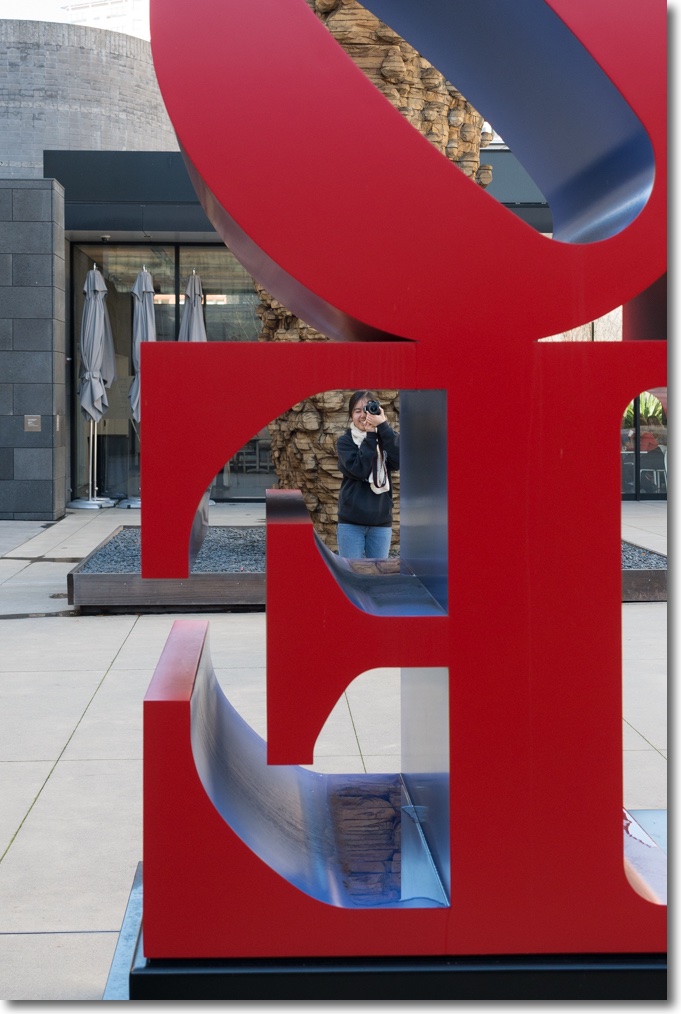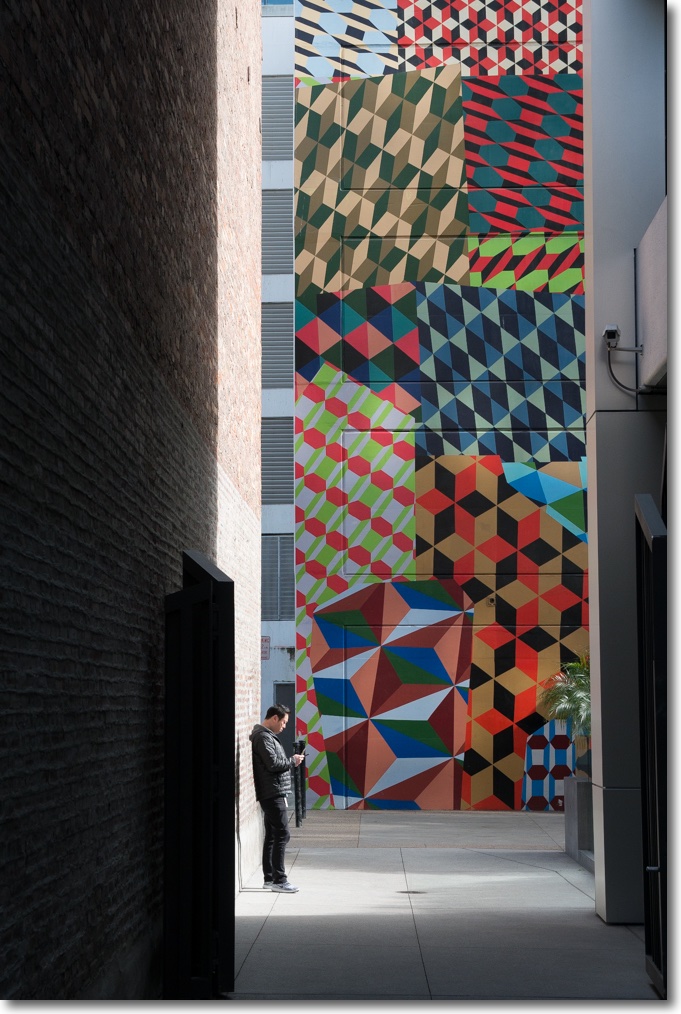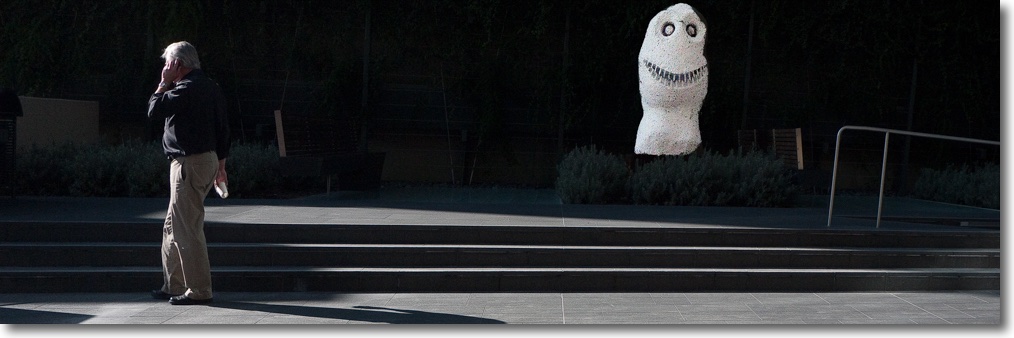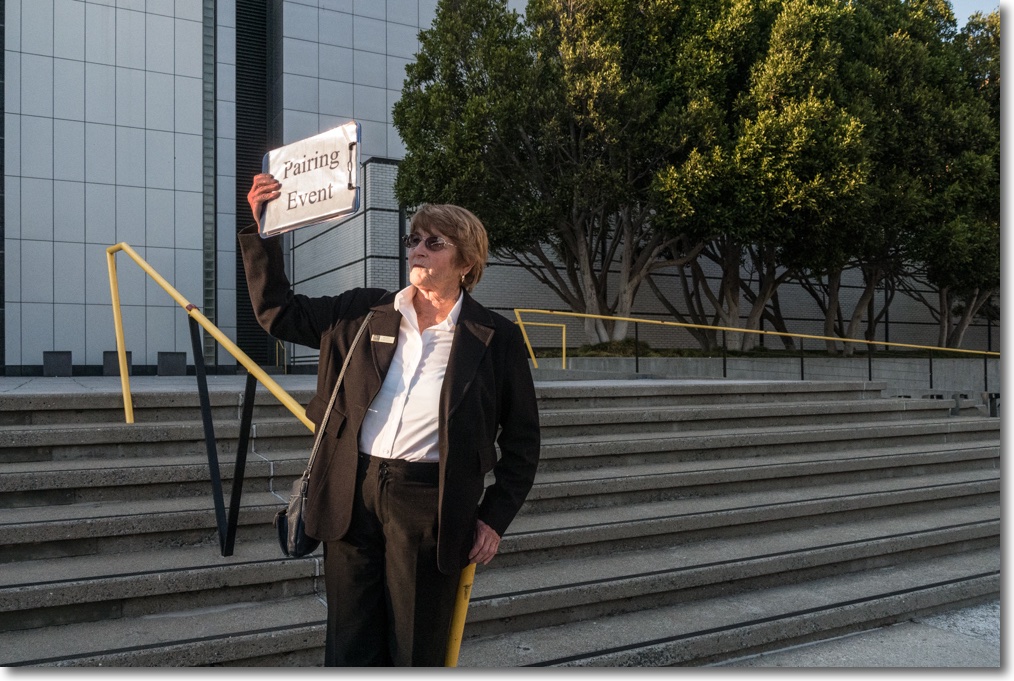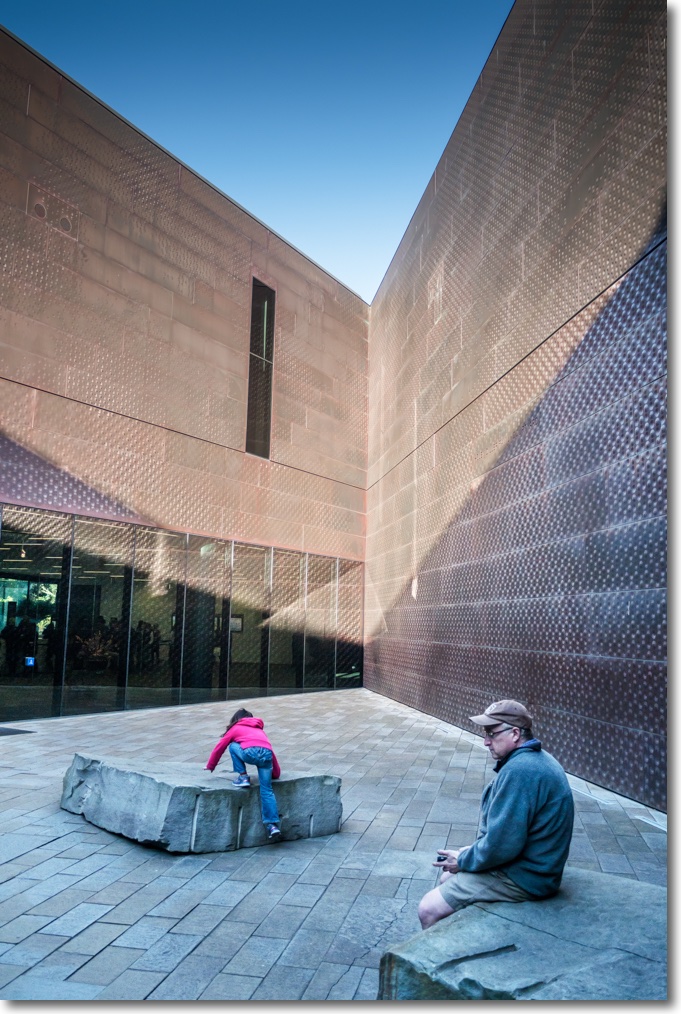A surreal touch.
Testifying to America’s profligate ways, the Phoenix area boasts over 100 golf courses. But of course. Where else but in the hot desert would you want your golf course, ensuring maximum waste of precious water so some inebriated old guys can ruin a walk by whacking a ball?
Drink, you ask? I asked around and was reliably informed by long timers that the Waste Management Phoenix Open is primarily a venue for excess alcohol consumption. The big name players stay away. Everyone else gets blotto including those board members of WM not currently in free taxpayer funded federal housing.
WM had spent great sums putting up some dozen temporary buildings in Scottsdale to serve aforesaid alcohol, not a couple of miles from my home, and with the event ended are now busy dismantling everything. I caught this surreal little scene on the way back from breakfast on a cool morning on the old bike:

One of the greatest sign images was, of course, taken by Walker Evans between the wars, around 1929:
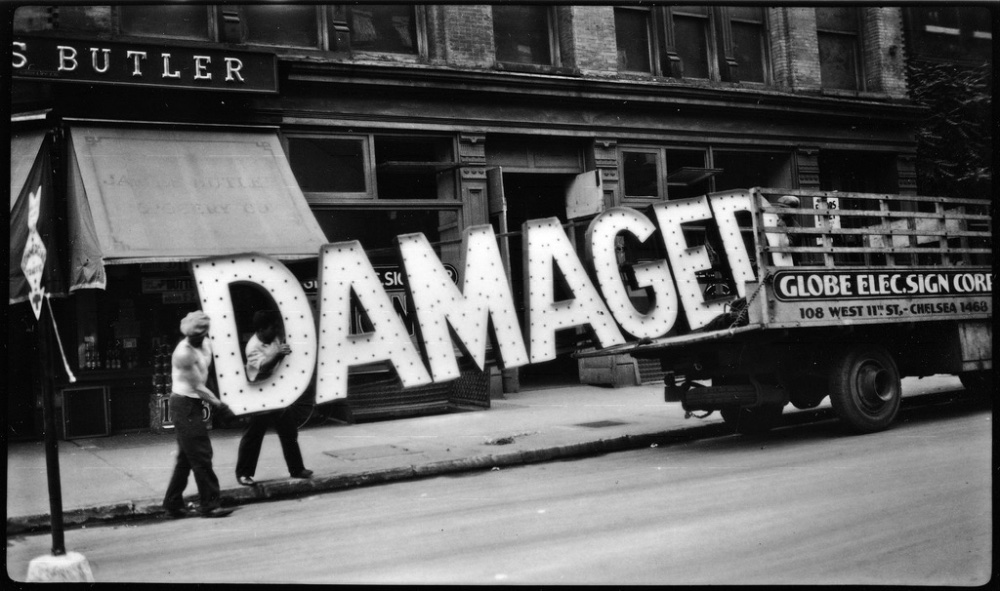
Evans used a plate camera. I used an iPhone 7.
